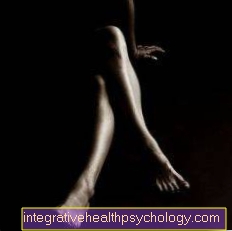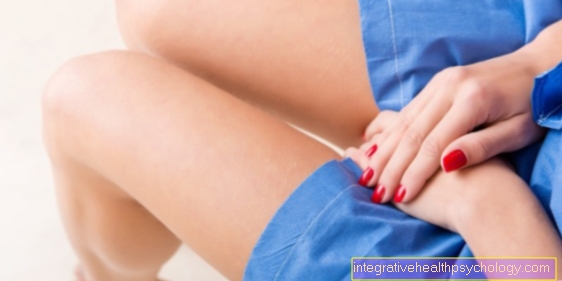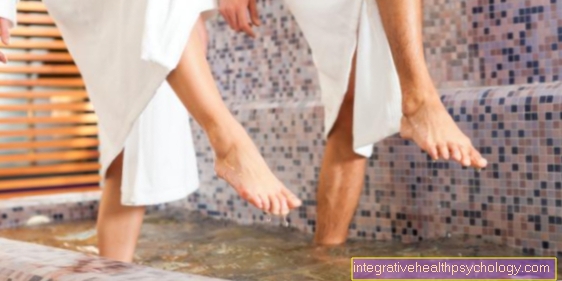Relaxation techniques
definition
The collective term of relaxation techniques encompasses a wide variety of methods that reduce the stress level and promote inner peace. The type and implementation of the various techniques can vary greatly. The methods range from short breathing exercises in everyday work to performing longer yoga exercises or meditating.
Although these techniques are very different, they always have the same goal of reducing stress and increasing one's own stress resistance. It is difficult to say which relaxation exercise is most effective, as there are great individual differences. Thus, as so often, the principle of trying things out applies here in order to find the best personal strategy for lasting relaxation.
Read more on the topic: Consequences of stress

What relaxation techniques are there?
In the last few decades, numerous relaxation techniques have developed, which can vary greatly in terms of the time required and the basic approach. One of the oldest ways to lower your stress level is physical activity. This is especially true for endurance sports, where your thoughts can wander, but other sports such as dancing or team sports can also achieve similar effects.
Every physical activity stimulates our metabolism, which leads to a reduction in our stress hormones. Many people already attach great importance to "fresh air" during sport.
Other relaxation techniques, which are also being used more and more frequently in Western countries, represent meditative procedures. While numerous different methods have been established here over the years, the basic approach has mostly remained the same. The goal is always to distance yourself from possible stress-inducing thoughts, which can usually be achieved through concentration and mindfulness exercises.
Simple mindfulness exercises include, for example, conscious deep inhalation and exhalation while fully focusing on the flow of the breath. This method is also used in classical meditation, in which one tries to reach a state of consciousness in which the current experience comes into focus. The worries and thoughts of everyday life move into the background and lose their relevance for the moment.
Another technique from the meditative process is progressive muscle relaxation. With this, after reaching a state of rest, all muscle groups in the body are tensed for a short time and then relaxed again. When focusing more closely, the relaxation of the muscle is described as extremely beneficial and warm, and body awareness is promoted.
Another technique in which the physical activity is a little more in focus is yoga, which originates from India. Here, too, there are numerous different subforms, each with a different focus. Hatha yoga is the most commonly practiced form. At the beginning, yoga should always be performed under guidance so that the various postures are performed correctly.
In addition to the techniques mentioned, there are numerous other relaxation methods. These include, for example, Qigong, Tai-Chi and autogenic training. But newer methods such as biofeedback are also being used more and more frequently.
Find out more here: How can you reduce stress?
Progressive muscle relaxation according to Jacobson
Progressive muscle relaxation, which has already been heard more frequently, is a frequently used relaxation technique that goes back to Edmund Jacobson.
With this, after reaching a calm basic state, individual muscle groups are tensed and relaxed one after the other. The muscle groups are only tensed for a few seconds, whereas the tension should then be released as abruptly as possible.
The focus of perception is on feeling the change between these two states, which not only relaxes the muscles but also relaxes the mind. An effect of this technique has meanwhile been proven in several studies.
Read more about this at: Progressive Muscle Relaxation
Relaxation techniques for falling asleep
It is not uncommon for people with a high level of stress to have circling thoughts before going to sleep that can prevent them from falling asleep. To avoid this, various techniques can be tried that lead to lasting relaxation.
On the one hand, this includes the progressive muscle relaxation mentioned above. Since this is optimally carried out lying down, it is advisable to do it before going to sleep.
But autogenic training has also proven its worth for relaxation before going to sleep. In this technique, which is often referred to as “self-hypnosis”, the focus is also on perceiving one's own body. Now, however, short formulas such as "My arms are getting heavier and heavier" are said in the spirit and your own feelings will follow this statement and you will feel an increased weight of the arms.
Autogenic training requires a lot of training as part of courses in order to be effective. In addition to these two methods, however, there are also special forms of yoga or the banal counting of breaths that can lead to relaxation before going to sleep.
You can find more information on this topic at: Breathing Exercises to Fall Asleep- What Really Helps?
Which relaxation technique is best for me?
Which of the many different relaxation techniques is best for a person depends on many factors.
One of the most important is usually the time frame. For example, people who are under very high time stress from work or family often do not have time to carry out longer-lasting procedures, such as meditation, in peace. Here, for example, it is more advisable to carry out short breathing exercises or a short sporting activity in the morning.
Furthermore, the effectiveness of relaxation techniques depends on the belief in the effectiveness of the technique. Quite a few people are not convinced of the basic idea of meditation and generally have a certain resentment towards such methods. In order to ultimately find the most effective relaxation technique for yourself, you should have tried several different methods and used them.
Are there any risks involved in the various relaxation exercises?
Basically, it must be stated that most relaxation techniques are to be rated as very low-risk from a medical point of view. However, there are a few things to keep in mind when doing special exercises.
For example, self-immersion in some exercises, such as autogenic training or meditation, can intensify this in people with depression or anxiety. The same applies to progressive muscle relaxation. Since the focus here is on inner perception, patients with asthma or heart disease can also experience unpleasant or fear-inducing experiences.
In order to avoid such risks, care should always be taken to first learn the various techniques under professional guidance.
Are you interested in the topic of stress reduction? Read more about this under: How can you reduce stress?
Relaxation techniques for children
Many of the methods described above can only be used to a limited extent with children, as they are too restless for many techniques and some approaches, such as meditation, appear to be too abstract.
Body-related procedures, on the other hand, such as progressive muscle relaxation or breathing exercises, can also be used on a shortened basis in children. Imaginative processes play a major role in relaxation techniques for children.
In these, the children usually lie on their backs with their eyes closed and are either taken on a “fantasy journey” by a narrator or are asked to imagine and describe a dream location themselves. The duration of the exercise is determined by the child himself.
For many children, however, coloring mandalas or reading books in a sheltered setting is relaxing.
Relaxation techniques for pregnant women
In principle, all relaxation techniques already mentioned can be carried out during pregnancy. Techniques such as conscious breathing, meditative procedures or yoga are also advisable in the event of stress during pregnancy. Practicing yoga during pregnancy should, however, be carried out cautiously and certain positions such as the headstand should be avoided, which is why professional guidance is advisable.
Read more on this topic: Courses for pregnant women
Relaxation Techniques During Childbirth
Relaxation exercises that can be performed during childbirth are massages, concentration exercises and breathing techniques. The latter are used very frequently and are mostly instructed by midwives.
In addition, positive feelings between two contractions can have a relaxing effect. These include, for example, pleasant smells, harmonious sounds or the inner imagination of beautiful images. Some women continue to use cold or warm compresses on their hands and legs to achieve a similar effect.
At this point, read our next article on the subject of "Birth": Proper breathing at birth
Relaxation techniques for fear
In the case of pronounced fears, such as exam anxiety or fear of enclosed spaces, relaxation exercises play a crucial role in coping with the symptoms. However, since these fears are usually acute, the techniques that can be used in such a situation are limited.
In addition to specific breathing exercises (breathing exercises to relax), concentration exercises play a major role here. Many of those affected report that it helps them to concentrate on individual objects in the immediate vicinity and to describe them, thereby directing their full attention to this task. However, if the fear reactions are so pronounced that these relaxation techniques do not have a sufficient effect, a presentation in a psychotherapeutic practice should be considered, as further relaxation techniques can be learned here.
You can find detailed information on this topic at: Therapy of Specific Anxiety
Relaxation exercises against exam anxiety
Exam anxiety is a widespread phenomenon and can lead to significant limitations in performance for those affected in examination situations. It is therefore advisable to carry out relaxation exercises before such a situation in order to keep fears within limits.
Basically, most of the methods used should be carried out regularly and not just before the acute exam situation, as these are often accompanied by a learning effect. Different breathing techniques are very often used in test anxiety.
The aim is to focus on the part of the body where the air movement can be felt most intensely while breathing in and out slowly and deeply. This focus and calm breathing can interrupt the circling thoughts and lead to an inner calming.
How or where do I learn a relaxation technique professionally?
The effect of all relaxation techniques, however different they may be, depends to a large extent on correct execution. It is therefore advisable to learn techniques such as yoga or progressive muscle relaxation in a professional setting.
Depending on the method, there are different contact points for this. Yoga, for example, is offered in a large number of courses that often offer different forms of yoga and thus you can discover the most effective yoga style for yourself.
It is important to ensure that the leader of the group has completed an official yoga training.
Progressive muscle relaxation or autogenic training are offered in several courses that can be booked privately. However, these are also often used in the context of psychotherapeutic treatment strategies. Internet offers or books are now also offered for almost all technologies, although their quality can vary significantly.
Find out more here: Autogenic training





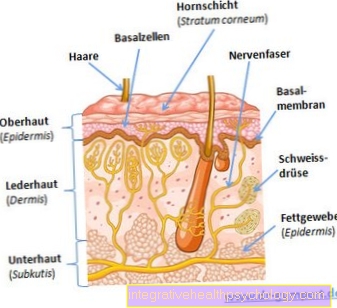


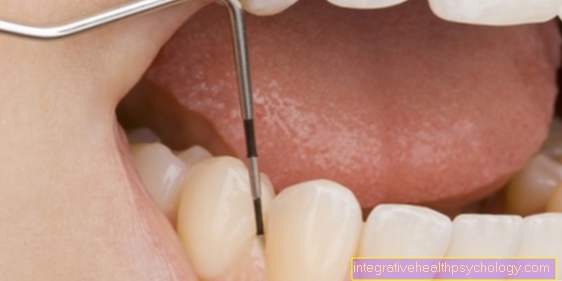

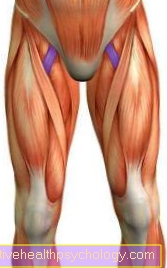
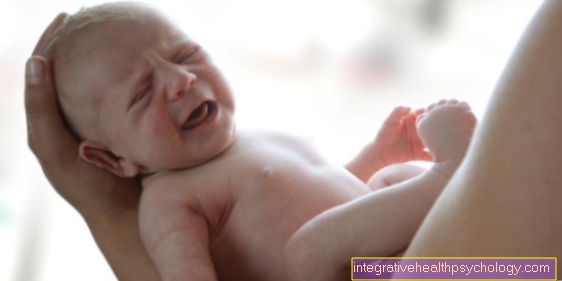
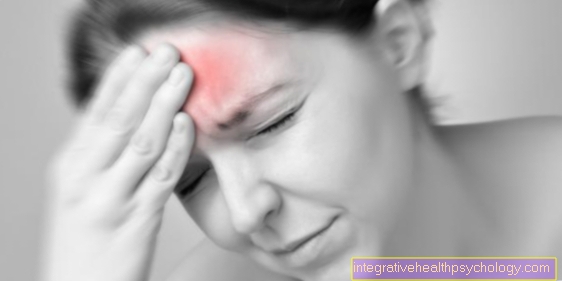

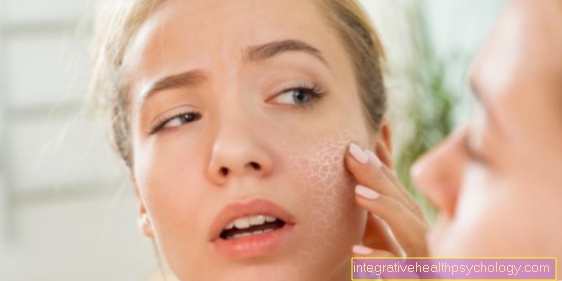
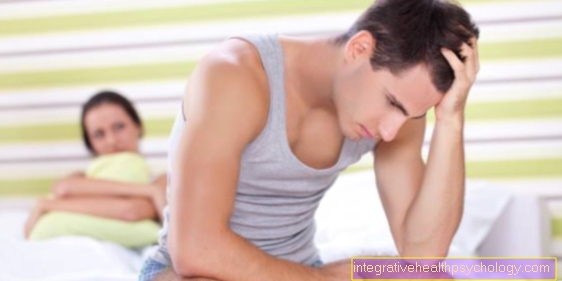

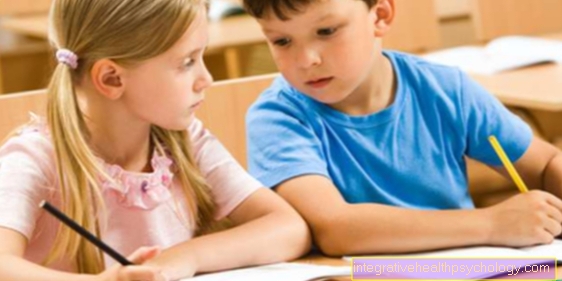

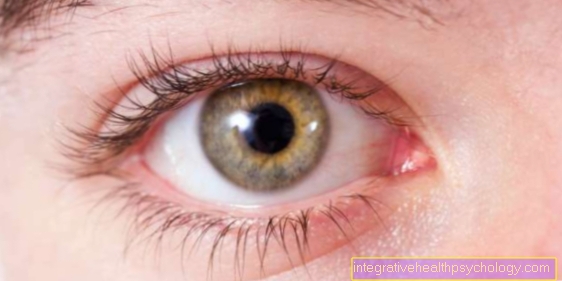
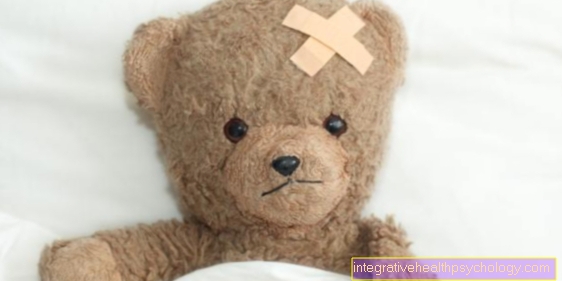


.jpg)


